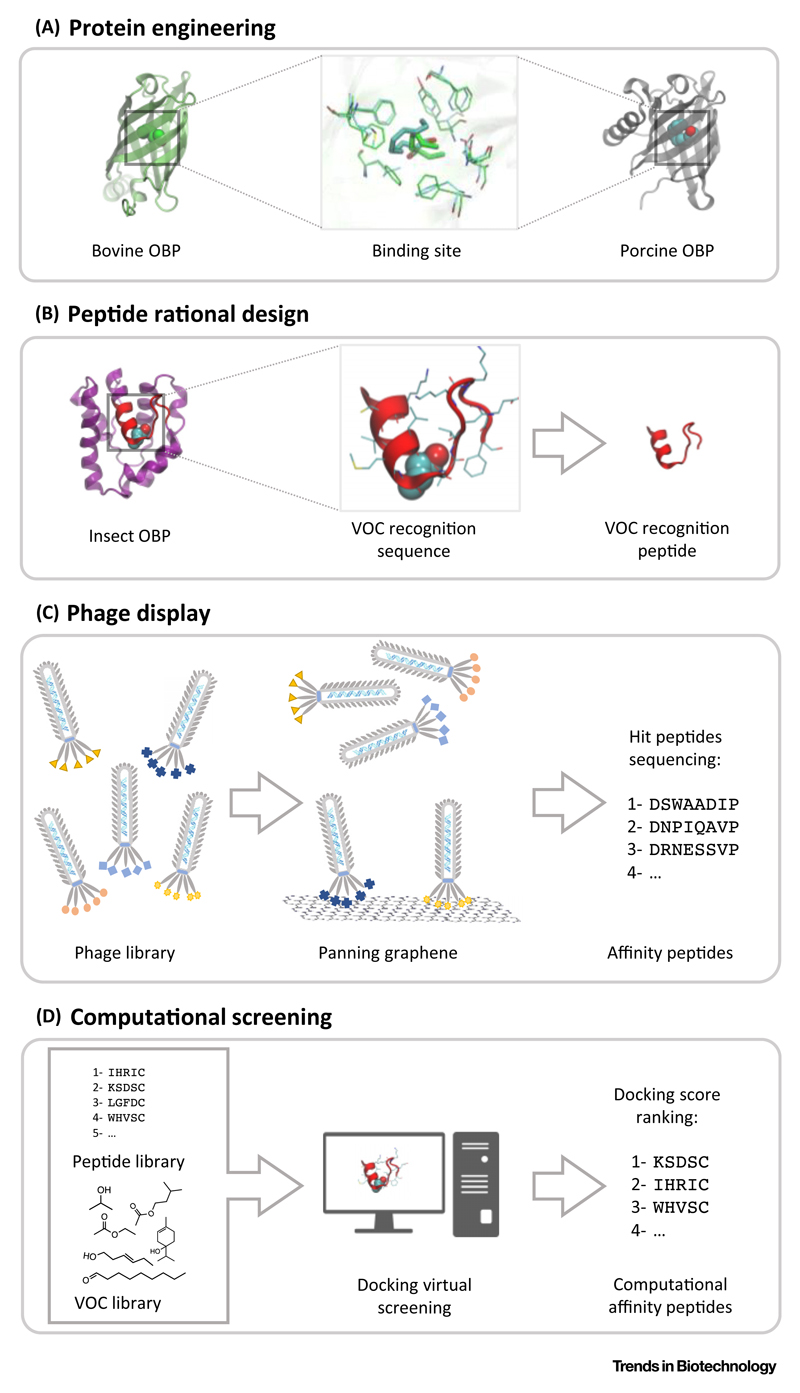Figure 2.
Key Figure
Protein and Peptide Discovery and Engineering for Gas Sensing
For a Figure360 author presentation of Figure 2, see the figure legend at https://doi.org/10.1016/j.tibtech.2018.07.004.
For a Figure360 author presentation of Figure 2, see the figure legend at https://doi.org/10.1016/j.tibtech.2018.07.004.
(A) Superimposition of the binding pockets of bovine and porcine odorant-binding proteins (OBPs) reveals how small differences in residue composition lead to different volatile organic compound (VOC) affinities [51]. (B) The extraction of volatile binding sequence from the fruit fly OBP LUSH, as a way to rationally develop peptides for VOC detection [62,63]. (C) Phage-display panning screens a multitude of peptide sequences against a graphitic surface mimicking benzene [68]. (D) Computational techniques predict the best peptide–VOC pairs to be experimentally tested [70].

